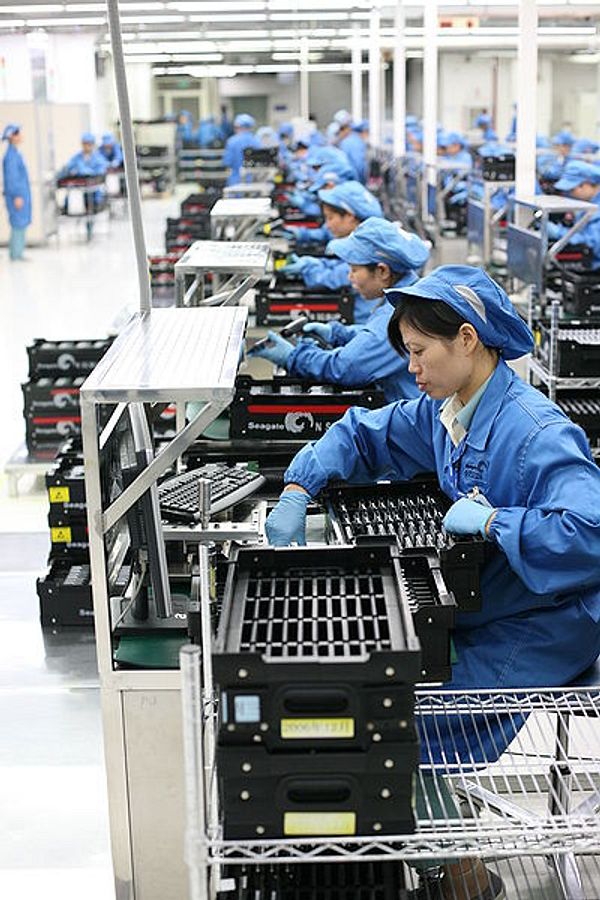Since 2010, the year China officially launched its policy prioritization of emerging industries, it has made fast strides in a wide range of cutting age technologies such as green technology (including electric cars), 5G telecommunication, artificial intelligence, drones and high speed trains. Now it is planning to organize a high-level two-day Seminar some time April-end on ‘Advancing Partnership on Industrial Revolution’ (PartNIR). This is aimed not only to take advantage of Industrial Revolution 4.0 for rising in high tech supply chain, but also increase China’s global market share in the emerging technology.
China’s ambitions PartNIR for development and cooperation in the arena of emerging technology resembles with the Belt and Road Initiative (BRI), it is pursuing since 2013 for enhancing connectivity through cooperation in development of infrastructure. China has requested governments of several countries to send delegations from governments’ ministries, business chambers and think tanks and research institutions to attend the seminar aimed at launching GDI PartNIR network. It has also solicited participation from financial institutions and private enterprises.
In a matter of a decade China’s BRI has become its mainstay in its journey towards becoming a global power and attracted participation from about 165 countries. The planned seminar intends to attract large number of its BRI partners to this new initiative for development of a global network in emerging technology. Some analysts opine that the GDI PartNIR network initiative of China might have been thrown up as a response to increased restriction on its tech companies by the US and its western allies.
It will keep open the GDI PartNIR to all the countries which acknowledge China’s Global Development Initiative (GDI). In the proposed Seminar the topics likely to figure prominently would include digitalization of global industrial and supply chains; digital transition and intelligent upgrading of real economy, especially manufacturing sector by amplifying the potential of next generation technology; next generation ICTs; biotechnology; new energy;
new materials, robotics, aerospace and shipbuilding; ocean engineering equipment; and environmental protection.
China intends to give a new fillip to its journey towards becoming a global power by alluring its BRI partner countries for cooperation in the area of emerging technology. As China pursued its Special Economic Zones under new industrial policy in the past with great sincerely to showcase the scheme as a success story, this time also the same is expected from GDI partner network. China knows it very well that technological development and cooperation alongside its BRI would be a force multiplier to realize its aspiration of becoming a global power.
For the building GDI PartNIR, China plans to enhance cooperation on scientific research among universities, research institutes, science parks and enterprises to promote joint technological breakthroughs and accelerate the incubation transition and application of R&D. This change in China’s mindset, many analysts believe, marks a shift from its past policy of forced technology transfer and stealing patents. China, along the learning curve through its rise, seems to have understood that the key to becoming global power is a healthy competition and cooperation rather than conflict or bullying.
China has also realized that to sustain its status as a global economic power, it needs to transition from traditional low-end technology value and supply chains to high tech ones. For this purpose, China wants to leverage its R&D and create a fair environment for Small and Medium Enterprises (SMEs) to better integrate them into global and regional industrial, supply and value chains.
China has probably realized that its ranking in goodwill and trust index is quite low due to its military expansionism and poor human rights records. Beijing is, therefore, continuously indulging in activities which could transform its regressive image. GDI, launched in September 2021 is one such programme under which China is offering assistance to less developed countries towards the achievement of Sustainable Development Goals of the UN by 2030. The new initiative GDI PartNRI network would not only enhance
its standing among the developing countries, but also create an alternative chain of partnership to beat the sanctions and bans against its tech companies in the West.
The proposed initiative would not be free from challenges as the Western countries would never allow China to be a tech superpower by replacing them and China would not find it practical to share its R&D with developing countries on equal and just terms. In March, China’s outgoing Premier Li Keqiang asserted that China’s science and technology policy should aim to build its strength and self reliance by pooling government resources for key technological breakthroughs. He also mentioned that China needs to leverage technology better as Beijing “countered external attempts to suppress and contain China’s development over the past five years by promoting development of the real economy through innovation and fostering new drivers of growth.” The new initiative is a step forward in this direction.
Already China’s Finance Ministry and its state planner National Development and Reform Commission (NDRC) have boosted the budget to support these goals, the latter claiming that it would accelerate the construction of hard tech infrastructure, including in artificial intelligence, 5G and big data and promote healthy development in instant delivery online retail and e-commerce, live streaming, key marketing channels for China’s consumer sector. It also asserted that it would consolidate China’s “leading position” in areas such as electric vehicles and solar panels, where the country is at the “frontiers of international competition.”
There is nothing new in China’s longing to become a leading global power including in the area of emerging technology; but its intentions of cooperation have betrayed in the past at least in the sense of asymmetric benefits to the partners. It is to be seen whether in this initiative, China transforms itself into a Good Samaritan for the developing countries or remains the same old bargaining merchant; that is its typical style!

Leave a Reply